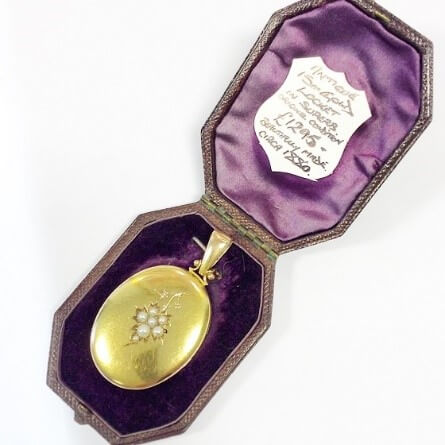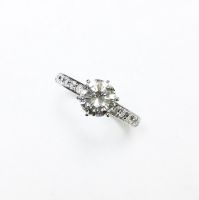Jewellery through the Ages: How have Styles Changed?
Here at Cuttings Jewellers, we love how jewellery reflects the era in which it was made. That’s why we’ve put together this timeline of how styles have changed over the years!
Early Years
People have been wearing jewellery since records began. The earliest jewellery artefact archaeologists have found to date is a collection of decorative shells from Mount Carmel in Israel that would have been worn on a necklace or bracelet.
Ancient World
As skills in metalwork developed, jewellery diversified and evolved into pieces made of bronze, copper, gold and silver. In Ancient Egypt, the wealthy were buried with their treasures when they died – the more valuable pieces contained gemstones such as turquoise, lapis lazuli, emeralds and pearls.
Middle Ages
The divide between rich and poor in the middle ages was evident in its jewellery – gold and silver pieces featuring large polished gemstones were saved for the nobility, whereas lower classes would wear simpler copper or pewter jewellery. Pieces would often be inscribed with a message that was believed to protect its wearer.
Renaissance
Gemstones started to be cut, rather than polished, to produce a sparkling finish. The renaissance was all about grandeur and finery, and jewellery followed suit. Religion, spirituality and mythology had a big influence in renaissance jewellery.
17th Century Jewellery
Fashion started to take a more delicate turn in the 1600s, and jewellery from this era displays pastel shades, botanical motifs and intricate metalwork.
Georgian Era
The soft looks of the 17th century continued into the Georgian era, with bows, flowers and foliage being primary inspiration for 18th Century Jewellers. Sentimental jewellery, such as Lover’s Eye miniatures and acrostic rings, were also becoming popular.
Edwardian Era
 Although short, the Edwardian era is notable in the history of jewellery as machine-made pieces started to be rejected in favour of delicate, intricate sophistication. Art nouveau was also a heavy influence on jewellery at this time, so fluid and ethereal designs flourished.
Although short, the Edwardian era is notable in the history of jewellery as machine-made pieces started to be rejected in favour of delicate, intricate sophistication. Art nouveau was also a heavy influence on jewellery at this time, so fluid and ethereal designs flourished.
Victorian Era
 Early Victorian jewellery was romantic in style, fitting with Queen Victoria’s marriage with Alfred. So it’s not surprising that following Alfred’s death in 1861, jewellery turned to mourning with darker gemstones becoming more prominent. In the final years of Victoria’s reign, the demand for jewellery meant that machine-made pieces were on the rise once more.
Early Victorian jewellery was romantic in style, fitting with Queen Victoria’s marriage with Alfred. So it’s not surprising that following Alfred’s death in 1861, jewellery turned to mourning with darker gemstones becoming more prominent. In the final years of Victoria’s reign, the demand for jewellery meant that machine-made pieces were on the rise once more.
Art Deco Era
 The Art Deco period marks the biggest shift in jewellery design. Curved edges and romantic motifs were replaced by clean-cut designs with geometric shapes. This was a really exciting time for art and culture and it certainly shows in the jewellery produced in this era.
The Art Deco period marks the biggest shift in jewellery design. Curved edges and romantic motifs were replaced by clean-cut designs with geometric shapes. This was a really exciting time for art and culture and it certainly shows in the jewellery produced in this era.
Retro Jewellery
After World War II it became more difficult to source gemstones and fewer people could afford lavish accessories. In order to make jewellery more accessible, semi-precious and synthetic stones were used to bring down the cost of pieces.
With cocktail parties becoming popular in the 50s, 60s and 70s, jewellery became bold and eye-catching and was produced with a variety of materials to suit all budgets.
21st Century Jewellery
 And here we are in the 21st Century! We have so many design eras to draw inspiration from, with innovative designers producing new ideas, that today’s jewellery is as diverse as the world we live in.
And here we are in the 21st Century! We have so many design eras to draw inspiration from, with innovative designers producing new ideas, that today’s jewellery is as diverse as the world we live in.
Why not take a look at our current stock to discover our latest jewellery pieces?




